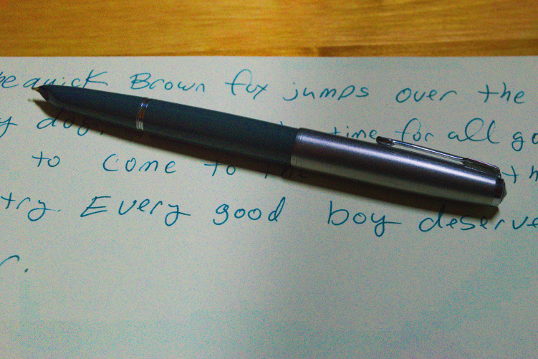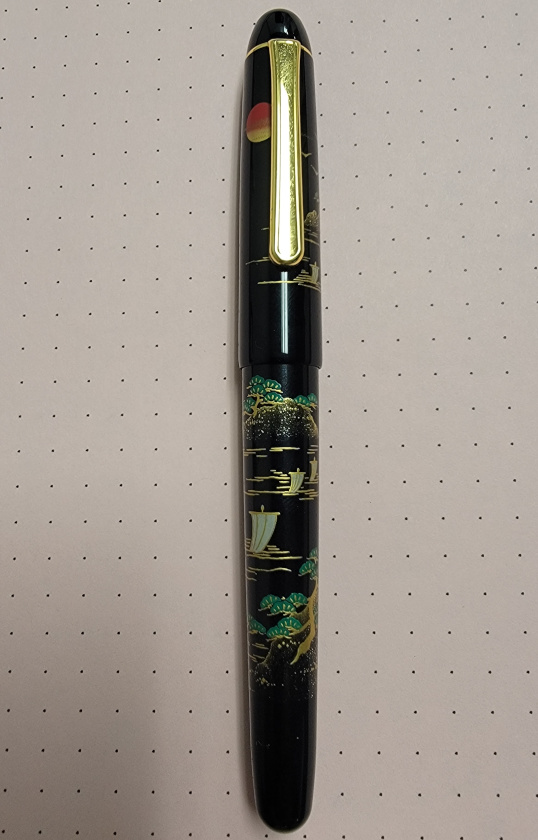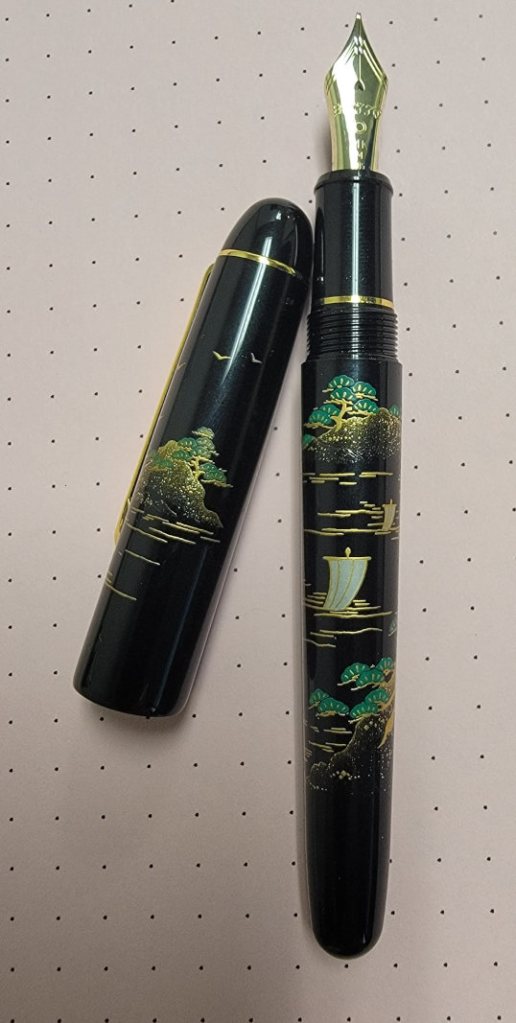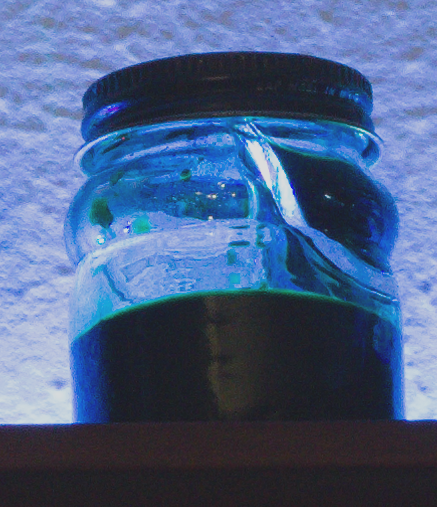We all have our addictions. I don’t think you can get away from them. I don’t think you want to get away from all of them.
Addictions are what make life worth living. Giving in to them is the spice that makes it worth getting out of bed in the morning (unless, of course, you are addicted to sleeping late). The trick is to choose your addictions.
There are addictions that are always bad. You see these on Intervention. Crack, for example… I think I can say that this is an addiction that is always bad. So don’t give in to your inner crackhead, channel him somewhere else.
Then there are addictions that might not be always bad, but are inappropriate, overly embarrassing, or catastrophic for you, personally. If I became addicted to anything overly expensive – say fast cars, supermodels, or gambling – I would be in big trouble.
So being the useless geek that I am, I tend toward useless, geeky addictions. One of the most obvious ones I’ve picked up lately is a rather silly obsession with fountain pens. I’ll talk more about that later, but today we will simply take a look at today’s single fix – and table the larger questions for another day.
Over that Internet thing… from that online commerce site that sort of rhymes with flea spray… I bought a cheap macro lens adapter for my camera. I did this for the sad purpose of being able to wallow in my stupid addiction in one more ridiculous performance method – I want to take pictures of pens.
Pen Porn.
And we’ll leave it at that. Judge if you must, it makes no difference to me. It is an addiction.
It came in the mail – an unmarked, brown paper package. I eagerly unwrapped my simple purchase, stuck it on the front of the lens, and put together a quick assemblage of tripod, desk lamps, and a cut up cylinder of translucent plastic (an old cover for a stack of blank DVDs) as a light tent.
I have a lot to learn about macro photography. I have a book. I’ll get better at it. But, of course, it is porn, so quality isn’t all that important, is it?
Today, let’s take a look at three different kinds of Sheaffer Nibs.
The nib is not only the most important part of a fountain pen, to a great extent, the nib is the fountain pen. It is the critical piece of hardware that conveys the ink from the pen body and deposits it onto the paper. Most people are familiar with a nib as a curved, triangular piece of metal with a narrow slit in the middle. Look close, and you will see a little rounded tip on the end that moves over the paper.
And that’s about it. Over the long decades, however, there have been many nib innovations and variations. I’ll take some pictures later of my Parker 51’s (if this raises the hair on the back of your neck, God help you… it does mine) but today we’ll look at three examples in the history of the Sheaffer nib.
First, we have the conical Triumph Nib. This is probably my favorite nib of all time. It is as stiff as a nail, but is very smooth and reliable, and it looks cool.
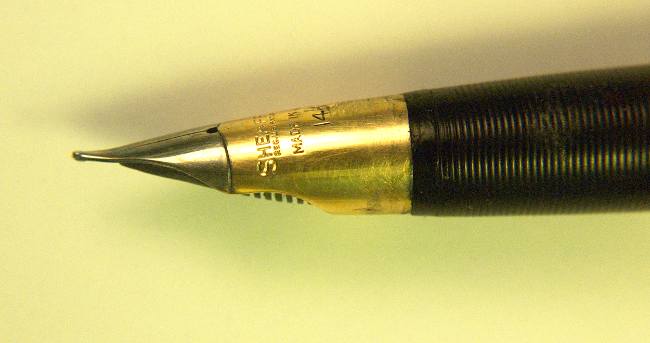
Sheaffer Triumph Nib
This is a Sheaffer two tone, touchdown filling pen, probably from around 1950 or so. I bought this one from a grubby pile of crap under the trees at Canton, rebuilt it, and now it writes like a champ.
The Triumph Nib ruled Sheaffer’s top of the line pens until the end of the 1950’s and the emergence of the Pen For Men (I do not have a Pen For Men, or PFM, it is really the only pen I really lust after. They were not very popular when they came out and are therefore rare, collectible, and expensive today. I simply can’t afford one) and its Inlaid Nib. The Inlaid nib dominated the Sheaffer line from 1959 to the present.

Sheaffer Inlaid Nib
This is a humble example of an Inlaid Nib. It is from a small Imperial from about 1965 – 1970. It is a bit different because it has a “V” shaped triangular cut-out, rather than the longer diamond shaped one. It is a small, cartridge filling pen, nothing fancy, but it writes really well. I have some orange-colored translucent ink in it, you can see a bit of ink on the nib.
Finally, we have an oddball. This is a Sheaffer “Dolphin” nib. You can see the odd hump that gives it its name. The Dolphin is simply a cheap imitation of the more tony inlaid nib. It is a design that is supposed to look like an inlaid nib, but is really an ordinary nib with a bit of plastic and metal stuck on top of it to make it look better.

Sheaffer Dolphin Nib
It may be cheap, but it works fine, this pen, again, is a very smooth and reliable writer. It is a cartridge fill. Candy gave me a touchdown filling Dolphin nib desk pen from an antique store in Granbury for Father’s Day – it is waiting for me to restore it – maybe this weekend. I love touchdown filling pens.

Sheaffer Pens
What is a touchdown filling pen? You’ll have to wait. More porn to come.


